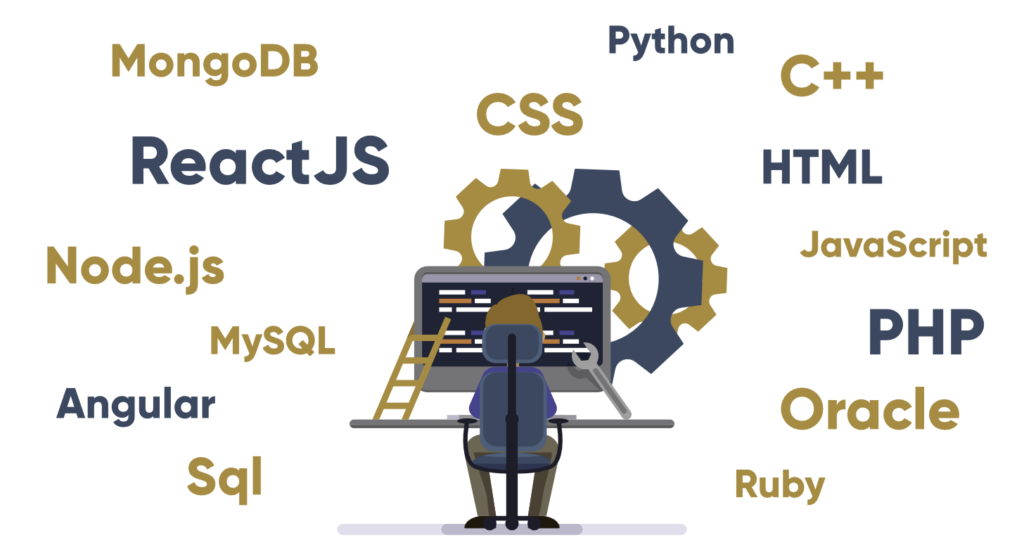Top 10 Most Popular Full Stack Developer Interview Questions
Full stack developers are in high demand. If you want to be one of them, you’ll need to know how to answer a few interview questions. We’ve compiled a list of the top 10 most popular Full Stack Developer Interview Questions, so you can make sure you’re ready for any job examination talks!
The Full Stack developer interview questions below will give you a good idea of what to expect for a job. This list has been compiled over many years of working with developers and interviewing them for our own company.

These questions will give a good idea of what to expect in a full stack developer interview.
Here are the ten most popular full stack developer interview questions:
What Is Your Favorite Software Design Pattern, And Why?
A design pattern is a general reusable solution to a common problem in software development. Design patterns are not standards or rules but guidelines that can help you solve common problems while coding.
Design patterns are an important part of object-oriented programming because they help us make our code more maintainable and easier to understand by others. They provide solutions for some of the most common software challenges we face daily as developers: how do we handle authentication? How should we implement a login form?
How do we handle data validation? What’s the best way to reuse business logic across multiple classes? Asking these questions may seem trivial at first glance; however, once you start asking them repeatedly across different projects, it becomes clear that there isn’t always one right answer—and this is where design patterns come into play!
How Would You Explain The Internet To A Child?
How would you explain the internet to a child?
This is a fun question that can give you an idea of how well someone understands the basics of the web. There are many ways to explain it, but here’s what I’d say:
The internet is a series of interconnected networks, computers, and servers used for communication and sharing information worldwide. You might think of it as one big system with millions of components working together to provide services like emailing, video streaming, or shopping online.
How Will You Describe RESTful APIs?
A RESTful API is an application programming interface that uses HTTP requests and responses and adheres to the architectural principles of REST (REpresentational State Transfer). A developer who has good knowledge of creating a RESTful API can use it to build web services.
The main advantage of using a RESTful API is that they are less complex than SOAP-based services, which use XML files for data exchange between clients and servers.
Tell Me About The Biggest Web Application Or Project That You Have Developed With All Of Its Stack Details?
The biggest project that you have worked on and its stack details:
The best way to answer this question is by describing your experience with the technology stack that your company uses. If it doesn’t use industry-standard technology, then it’s best to describe another comparable application.
For example, if you’re interviewing at a company that uses Ruby on Rails. But also the firm has its own custom Java backend and Ruby frontend. It’s likely that they don’t want to hear about some other web app using only Rails (unless perhaps it was a very large one). Instead, they’ll probably want to hear about how you used Java and Rails together in a real-world situation. This can be especially helpful if the interviewer is interested in hiring someone who has both frontend and backend development skill sets. Because it shows off your knowledge of both sides of the equation.
What Are Your Favorite Frameworks, And Why?
The interviewer will likely ask you this question to gauge your knowledge of the various frameworks used in full-stack development.
It’s important to be prepared for this question, as it may appear in several different formats. Some interviewers will use an open-ended question about your favorite frameworks, while others may give you options and ask which one(s) you prefer. For example:
- What are some of your favorite frameworks? Why do you use them?
- Which framework do you prefer over others? Why?
- Which is more popular among developers today: Nodejs, Rails (or any other popular framework)?
What Does DRY Stand For, And When Do We Use It?
The DRY principle states that copying and pasting code in your application is a bad idea because it makes it harder to maintain and update. Instead, it would be best if you used functions or classes so that the code can be reused in different places.
The first step of implementing DRY is to identify areas where similar logic is repeated throughout your application. Then extract that logic into a separate function or class, making sure that all references are updated appropriately. Next time you need to use this piece of code elsewhere in your project, extend from this class (or call its method) instead of copying everything from scratch.
Do You Know About SQL Injection, And How Can It Be Prevented?
SQL injection is an attack that allows the attacker to send malicious SQL statements to a web application to compromise it. The attacker will insert the malicious statement into user input and submit it as part of an HTTP request, executing it on the backend database server.
SQL injection attacks can occur in any application that uses untrusted data, such as user input or data retrieved from other sources (such as external APIs). Some common examples of applications vulnerable to SQL injection include:
- Web-based e-commerce sites (e.g., where users add items to their cart)
- Banking websites (e.g., where they log into their accounts)
- Business management systems (e.g., where employees enter data such as time worked and completed tasks)
Explain What Cross-Site Scripting Is And Some Methods To Prevent It?
Cross-site scripting (XSS) is a type of computer security vulnerability typically found in web applications. XSS aims to inject malicious scripts into otherwise benign and trusted websites that are then executed in the browser of visitors to the website.
The most common types of XSS attacks include:
- Stored (persistent) – data that has been entered in an HTML form and accepted by the server but not yet processed. For example, suppose an attacker submits an email address using a button on your site. And you save that data without sanitizing or escaping it first. In that case, other users who visit your site may be able to view this information through various means, such as viewing source code or simply clicking on some link that shows all user accounts associated with their email address.
What Is A Cookie, How Do They Work, And How Can We Prevent Cyber Security Attacks?
What is a cookie?
A cookie is a small piece of data that gets stored on your computer when you visit a website. Cookies are used to store information such as settings, preferences, and login information. They can also be used to track user activity across multiple pages in order to provide more customized content.
How do they work?
Cookies typically expire after 30 days or less but can last longer depending on how you configure your browser settings. When you visit a website for the first time, it sends cookies back to that site. So it knows who you are and where you’ve been online before coming back again later on down the line!
What Are The Challenges In Implementing A Single Sign-On (SSO) System For An App/Website?
You should be able to talk about the challenges involved in implementing a single sign-on (SSO) system for an app or website. You should also be able to describe some of the solutions that you would use to overcome these challenges.
When a user logs in, many things must happen:
- How do you authenticate the user and How do they determine their identity?
- What are the methods to secure the user’s credentials so that other users cannot access them if they get stolen?
- Preventing multiple logins from different locations. Especially if no geo-location systems are set up yet, is often done using IP address validation or cookies.
- Prevent someone from stealing another person’s password, which they can do by simply looking over their shoulder while they type it in and then logging into their account later with those credentials. This could also happen when someone steals another person’s phone while they were logged into an app. Such apps like Facebook Messenger before handing back the device!
Conclusion
In conclusion, it’s always a good idea to check out Full Stack Developer course in Chennai that can help you up to your game as a full-stack developer. With the right training, you’ll be able to tackle any Full Stack Developer interview questions thrown your way confidently.
So what are you waiting for? Start learning today!





